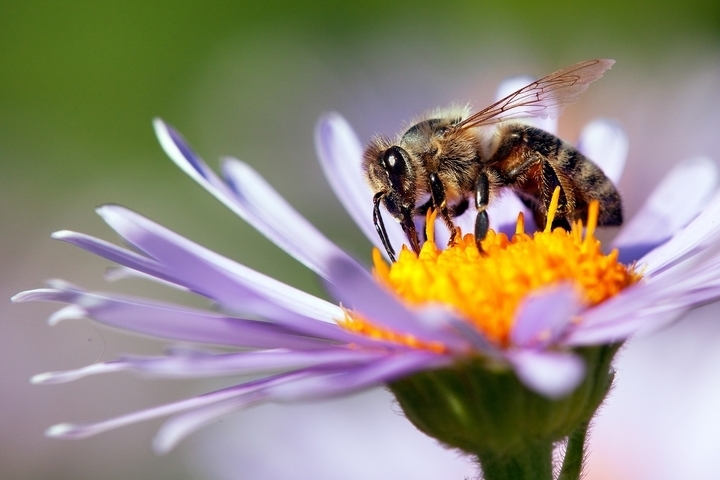
Bees hold an integral position within our ecosystem, serving as indispensable pollinators. These hardworking insects tirelessly gather nectar and pollen from blossoms, paving the way for plant fertilization and propagation. As they travel from one bloom to another, bees transport pollen grains, spearheading the growth of fruits, vegetables, and various crops.
Despite their immense benefits, bees may prove troublesome on occasion. In some instances, bees may build hives near human homes or in areas with high pedestrian traffic. Furthermore, structural damage may arise if bees construct their homes within walls or other sections of buildings. It is crucial to address such scenarios while always remembering the significance of conserving bee populations and mitigating harm to these worthy creatures.
When confronted with the necessity to remove bees without damage, it is vital to employ humane and eco-friendly strategies. Reaching out to local beekeepers is a good action since they possess the know-how and equipment.
Let’s learn how to get rid of bees without killing them.
Call local beekeeper for relocation.
Contacting a local beekeeper is an excellent idea if you have a bee problem. These experts come equipped with the know-how, background, and proper gear to relocate bee colonies to undesired spots safely. By reaching out to a beekeeper, you can trust that those buzzing insects are managed with professional care.
Local beekeepers are super eager to collect bees for their apiaries. Turning to a beekeeper not only puts an end to your problem but also backs the preservation of our much-loved bees and the vital part they play in Mother Nature’s grand scheme. With their vast expertise, these beekeepers can evaluate the situation, safely gather the bees, and take them to specifically chosen spots where they’ll soar.
By involving these pros, everyone is happy. The bees are looked after, and any worries or dangers related to them being around are tackled head-on.
Apply natural bee repellents.
Natural bee repellents discourage bees from specific locations without harming these vital pollinators. Natural repellents possess potent aromas that bees find bothersome or bewildering, deterring them from lingering or constructing hives. Some well-known natural bee repellents contain fragrant herbs such as mint, basil, or eucalyptus and essential oils like citronella or lemongrass.
When employing natural bee repellents, it’s vital to disperse them thoughtfully in areas where you wish to deter bees. It could involve entryways, windows, alfresco dining spaces, or spots abundant in flowers that appeal to bees. It’s worth noting that natural repellents are typically temporary measures and may require frequent reapplications, particularly after rainfall or once the aroma wanes.
While natural repellents can help foster a more bee-free environment, it’s crucial to contemplate the broader impact on the local bee population. Find a balance between deterrence and preserving bees’ significant role in pollination.
Seal potential entry points.
Sealing potential access points deters bees from nesting in undesirable locations. Bees find their way into structures through tiny gaps, fissures, or openings in walls, ceilings, windows, or other architectural elements. You establish a barrier that dissuades bees from venturing into enclosed spaces by pinpointing and sealing these entry points. That reduces the likelihood of encounters or nesting.
To effectively seal possible entry points, inspect your property comprehensively, focusing on areas where bees might seek refuge or nesting spots. Utilize suitable sealants, such as caulk or weatherstripping, to close any identified gaps or openings. Concentrate on spaces around utility pipes, vents, windows, or cracks in cladding.
Sealing these entry points keeps bees at bay. It also discourages other pests and insects from intruding. These preventative measures ensure a bee-free atmosphere while fostering a secure and pleasant space for people.
Use bee-friendly deterrents.
Bee-friendly deterrents can dissuade bees from settling or lingering in undesirable spots without harming them. These deterrents aim to establish an environment that bees find unattractive, prompting them to search for alternative sites.
One bee-friendly deterrent is ultrasonic devices. These gadgets release high-frequency sound waves that bother bees yet are inaudible to humans. By strategically positioning ultrasonic devices close to troubled areas, you can prevent bees from gathering or creating nests without resorting to damaging techniques.
Another option for a bee-friendly deterrent is using fake wasp nests. Bees, like numerous other insects, are territorial and tend to steer clear of areas where other colonies exist. By suspending imitation wasp nests, which mimic natural ones but pose no real danger, you can create the impression of occupied territory. That discourages bees from establishing nearby.
Adjust landscaping to reduce bees.
Tweaking your landscape can be an effective strategy to lessen bees in specific areas while fostering a harmonious atmosphere for both people and bees.
Bees are drawn to blossoming plants, so one approach is to remove or transfer flowers that are attractive to bees thoughtfully. This tactic can shift bee activity away from busy areas or locations that might pose a danger. Concentrating on plant choice and positioning allows you to fashion a landscape that expertly balances visual appeal and minimizes bee activity.
Another landscape modification involves incorporating plants that don’t entice bees as much. While it’s vital to support pollinators, choosing plants with less eye-catching or fragrant flowers can help decrease bee allure in designated zones. Instead, select plants that depend on wind pollination or possess inconspicuous blooms.
This method can help establish areas with fewer bees while preserving a varied and environmentally conscious landscape. It’s imperative to ensure that other pollinators, like butterflies and native bees, aren’t adversely affected by these landscape alterations since they also hold crucial positions in maintaining ecosystem well-being.












